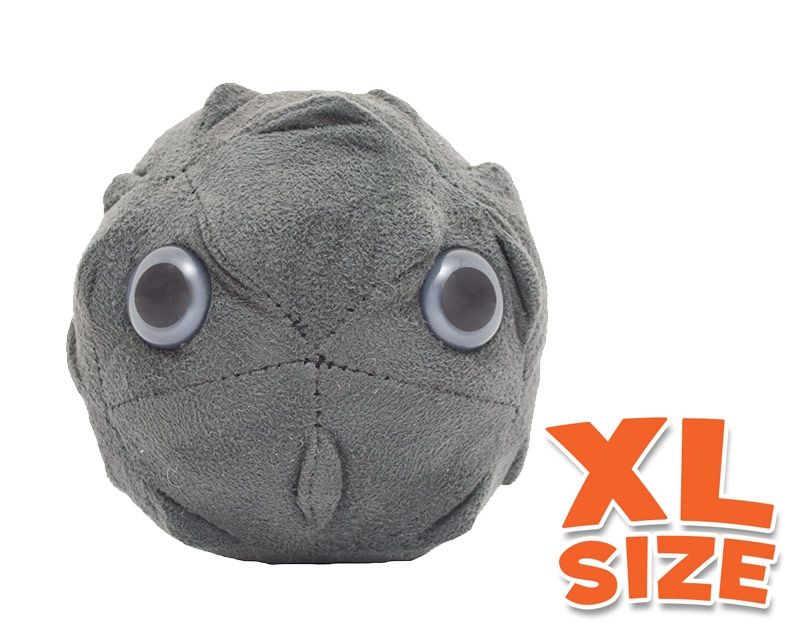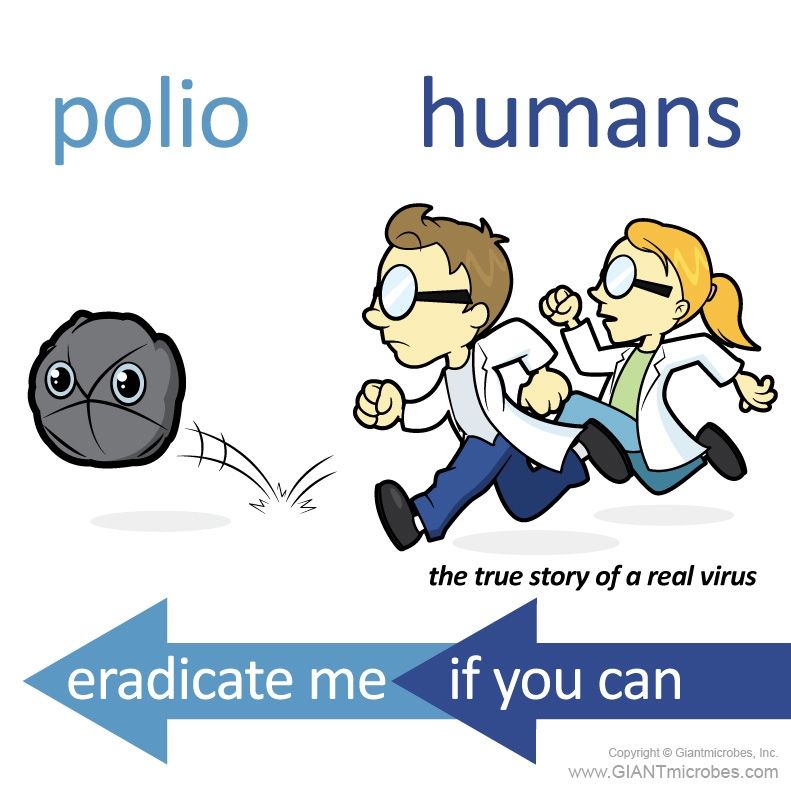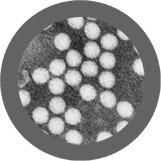Polio XL 9"

Your purchase supports Rotary International’s priority to End Polio Now by reaching every child with the polio vaccine. Thanks to the Bill & Melinda Gates Foundation, your contribution will be tripled, getting us closer to a polio-free world. $2 from your purchase will be donated to Rotary to fight polio. With the Gates Foundation matching gift, up to $50 million per year, this $6 donation will protect a child for life against the poliovirus.
Product Details
Additional Information
| Sizes | Giantmicrobes are based on actual microbes, cells, organisms and other critters, only 1,000,000 times actual size! Gigantic (GG) 16-24" XL (XL) 10-15" Original (PD) 5-8" Keychain (KC) 2-4" with clip |
|---|---|
| Materials | Plush from all new materials. Stuffed with polyester fiber fill. Surface washable: sponge with water & soap, air dry. |
| Packaging | Each plush microbe includes a printed card with fun, educational and fascinating facts about the actual microbe or cell. |
| Safety | Every product meets or exceeds U.S. and European standards for safety. For ages 3 and up. |
All about Polio XL 9"
FACTS: Although paralytic diseases have existed for ages, polio was the scourge of the early part of the 20th century. Ironically, up to 99% of the time, polio is asymptomatic, abortive, or non-paralytic, producing no symptoms, flu-like symptoms, or light-sensitivity and neck-stiffness. However, the petrifying consequences of paralytic polio (often spread during the summer months) were withered legs, paralyzed chest muscles, and in the worst cases, immersion into an “iron lung” breathing-machine. Though the illness passed after a few weeks, the paralytic effects could persist.
One theory suggests that modern sanitation may have actually helped trigger the epidemic of paralytic polio. Improved sewage systems greatly reduced incidents of the infant polio that confers immunity but tends to be non-paralytic. As polio was contracted in historically large numbers later in life, incidents of paralytic polio greatly increased.
Early vaccines developed during the 1930’s proved ineffective: indeed, a number of participants in the vaccine trails ended up developing polio. But in the late 1940’s, former flu-vaccine researcher Jonas Salk took up the task of developing a polio vaccine. By the early 1950’s, large-scale vaccine trials involving nearly 2 million children were being performed. On April 12, 1955 the success of the vaccine trials was announced to wide-spread acclaim. By 1957, polio cases in the United States had dropped by 90%.
Though polio is now eradicated from the Western world (with only a handful of cases recorded annually, all vaccine-associated or linked to travelers), polio survives in Africa, India, and South East Asia. Nevertheless, continued efforts to promote vaccination promise one day to paralyze polio. Permanently.






